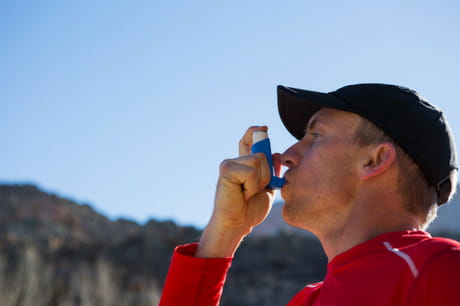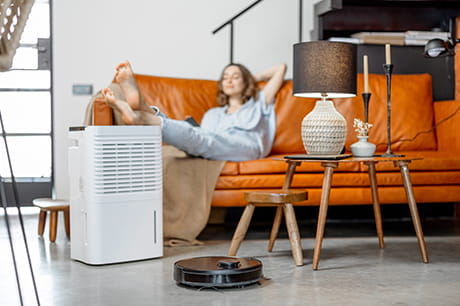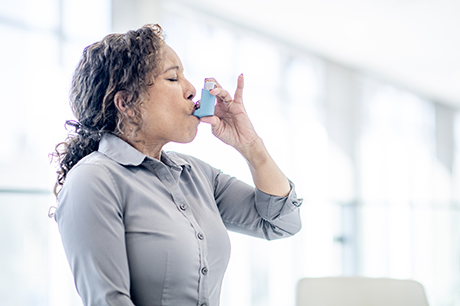How to manage exercise-induced asthma (and still get fit)
Asthma isn’t an excuse not to work out
We know we need to get fit—but for some people, the prospect of playing a competitive game of basketball, going for a run or swimming laps in a pool can be downright scary. It could make you cough, wheeze and struggle to breathe.
“Everyone should get the recommended 150 minutes of exercise each week—but if you experience wheezing or have a hard time breathing, it might keep you from exercising regularly,” said Navitha Ramesh, M.D., a pulmonologist at Geisinger. “But exercise can actually help your lung function. The key is finding a balance between exercising and managing this condition.”
Exercise-induced asthma, also known as exercise-induced bronchoconstriction (EIB), is caused by prolonged exercise.
Normally, when we breathe, our nose’s job is to warm up and moisten the air. But during exercise, when we breathe faster and more deeply, the air that we breathe in is colder and drier, and the membranes that line the bronchi, or airway passages in the lungs, can swell.
These membranes are sensitive in people with asthma, which could result in wheezing, coughing, shortness of breath and fatigue.
As many as 90 percent of people with asthma experience EIB. This type of asthma usually hits five to 10 minutes after exercise ends; the symptoms often go away on their own after 30 to 45 minutes of rest.
“Symptoms vary from person to person and depend on a bunch of factors, like how cold it is outside, how humid the air is, how strenuous the exercise is and if there’s pollen in the air that can irritate the lungs,” said Dr. Ramesh.
Though EIB can make working out a little more complicated, it shouldn’t stop anyone from exercising. Understanding your triggers and working with your doctor can help you manage your asthma symptoms.
“Over time, exercising or playing sports can actually lessen asthma symptoms and improve lung function,” said Dr. Ramesh. “To prevent EIB, your doctor may prescribe medication.”
Your doctor may recommend using an inhaler 10 minutes before you start exercising. If you have chronic asthma, managing these symptoms with a daily inhaler can also reduce the likelihood or severity of symptoms.
Certain types of exercise and sports may be better for people with EIB than others. For example, swimming may keep symptoms in check because the air is typically warm and humid, which can make it easier to breathe.
Other types of sports or workouts that involve short bursts of exercise may also be easier for someone with EIB. On the other hand, endurance sports, such as soccer or distance running, or cold-weather sports, such as hockey or skiing, may not be well tolerated.
“If you have EIB, you should work to find a sport or exercise regimen through trial and error that works for you,” said Dr. Ramesh.
To lessen the symptoms of asthma and their severity, keep these tips in mind:
- Warm up and cool down before exercising. This will help you lungs get acclimated to the air.
- Avoid working out during cold weather. If you do, cover your mouth and nose.
- Avoid working out when you have a cold or viral infection.
- Always use your inhaler or prescribed medication before you work out.
“You shouldn’t use EIB as an excuse not to work out and get exercise. It’s likely possible as long as you work with your doctor, find a regimen that works for you and take any medication as necessary,” said EXPERT.
Dr. Navitha Ramesh is a pulmonologist at Geisinger Wyoming Valley. To schedule an appointment, call 800-275-6401.









